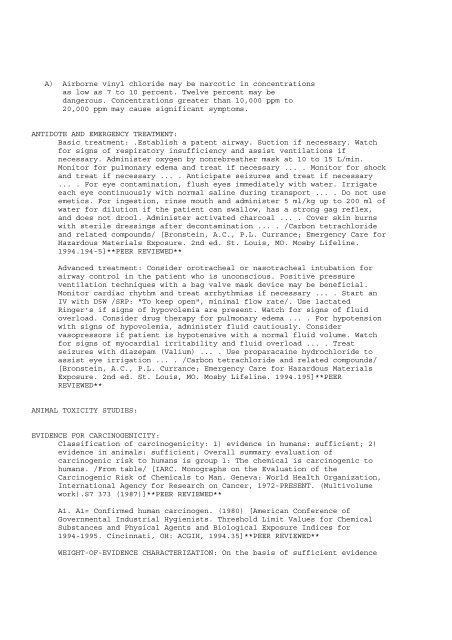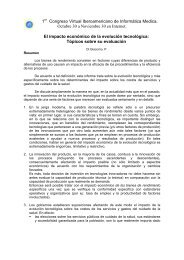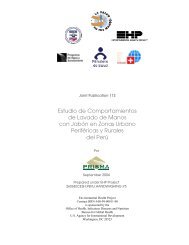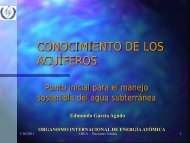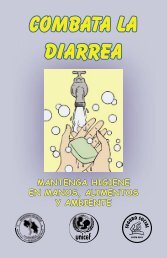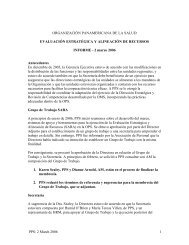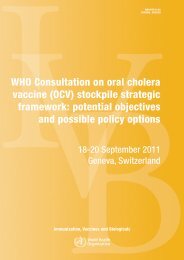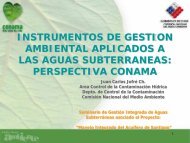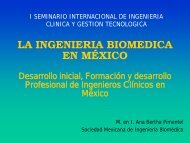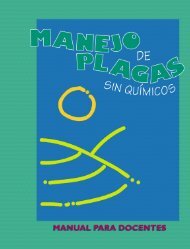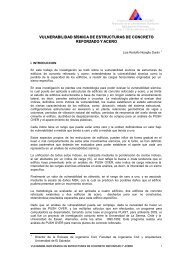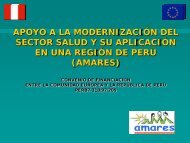A) Airborne vinyl chloride may be narcotic in concentrationsas low as 7 to 10 percent. Twelve percent may bedangerous. Concentrations greater than 10,000 ppm to20,000 ppm may cause significant symptoms.ANTIDOTE AND EMERGENCY TREATMENT:Basic treatment: .Establish a patent airway. Suction if necessary. Watchfor signs <strong>of</strong> respiratory insufficiency and assist ventilations ifnecessary. Administer oxygen by nonrebrea<strong>the</strong>r mask at 10 to 15 L/min.Monitor for pulmonary edema and treat if necessary ... . Monitor for shockand treat if necessary ... . Anticipate seizures and treat if necessary... . For eye contamination, flush eyes immediately with water. Irrigateeach eye continuously with normal saline during transport ... . Do not useemetics. For ingestion, rinse mouth and administer 5 ml/kg up to 200 ml <strong>of</strong>water for dilution if <strong>the</strong> patient can swallow, has a strong gag reflex,and does not drool. Administer activated charcoal ... . Cover skin burnswith sterile dressings after decontamination ... . /Carbon tetrachlorideand related compounds/ [Bronstein, A.C., P.L. Currance; Emergency Care forHazardous Materials Exposure. 2nd ed. St. Louis, MO. Mosby Lifeline.1994.194-5]**PEER REVIEWED**Advanced treatment: Consider orotracheal or nasotracheal intubation forairway control in <strong>the</strong> patient who is unconscious. Positive pressureventilation techniques with a bag valve mask device may be beneficial.Monitor cardiac rhythm and treat arrhythmias if necessary ... . Start anIV with D5W /SRP: "To keep open", minimal flow rate/. Use lactatedRinger's if signs <strong>of</strong> hypovolemia are present. Watch for signs <strong>of</strong> fluidoverload. Consider drug <strong>the</strong>rapy for pulmonary edema ... . For hypotensionwith signs <strong>of</strong> hypovolemia, administer fluid cautiously. Considervasopressors if patient is hypotensive with a normal fluid volume. Watchfor signs <strong>of</strong> myocardial irritability and fluid overload ... . Treatseizures with diazepam (Valium) ... . Use proparacaine hydrochloride toassist eye irrigation ... . /Carbon tetrachloride and related compounds/[Bronstein, A.C., P.L. Currance; Emergency Care for Hazardous MaterialsExposure. 2nd ed. St. Louis, MO. Mosby Lifeline. 1994.195]**PEERREVIEWED**ANIMAL TOXICITY STUDIES:EVIDENCE FOR CARCINOGENICITY:Classification <strong>of</strong> carcinogenicity: 1) evidence in humans: sufficient; 2)evidence in animals: sufficient; Overall summary evaluation <strong>of</strong>carcinogenic risk to humans is group 1: The chemical is carcinogenic tohumans. /From table/ [IARC. Monographs on <strong>the</strong> Evaluation <strong>of</strong> <strong>the</strong>Carcinogenic Risk <strong>of</strong> Chemicals to Man. Geneva: World Health Organization,International Agency for Research on Cancer, 1972-PRESENT. (Multivolumework).S7 373 (1987)]**PEER REVIEWED**A1. A1= Confirmed human carcinogen. (1980) [American Conference <strong>of</strong>Governmental Industrial Hygienists. Threshold Limit Values for ChemicalSubstances and Physical Agents and Biological Exposure Indices for1994-1995. Cincinnati, OH: ACGIH, 1994.35]**PEER REVIEWED**WEIGHT-OF-EVIDENCE CHARACTERIZATION: On <strong>the</strong> basis <strong>of</strong> sufficient evidence
for carcinogenicity in human epidemiology studies, vinyl chloride isconsidered to best fit <strong>the</strong> weight-<strong>of</strong>-evidence characterization Category A,according to current EPA Risk Assessment Guidelines (USEPA, 1986). Agentsclassified into this category are considered known human carcinogens. Thisclassification is supported by positive evidence for carcinogenicity inanimal bioassays including several species and strains, and strongevidence for genotoxicity. Under <strong>the</strong> Proposed Guidelines for CarcinogenRisk Assessment (USEPA, 1996), it is concluded that vinyl chloride is aknown human carcinogen by <strong>the</strong> inhalation route <strong>of</strong> exposure, based on humanepidemiological data, and by analogy <strong>the</strong> oral route because <strong>of</strong> positiveanimal bioassay data as well as pharmacokinetic data allowing doseextrapolation across routes. Vinyl chloride is also considered highlylikely to be carcinogenic by <strong>the</strong> dermal route because it is well absorbedand acts systemically. The weight <strong>of</strong> evidence for human carcinogenicity isbased on 1) consistent epidemiologic evidence <strong>of</strong> a causal associationbetween occupational exposure to vinyl chloride via inhalation and <strong>the</strong>development <strong>of</strong> angiosarcoma, an extremely rare tumor; 2) consistentevidence <strong>of</strong> carcinogenicity in rats, mice, and hamsters by both <strong>the</strong> oraland inhalation routes; 3) mutagenicity and DNA adduct formation by vinylchloride and its metabolites in numerous in vivo and in vitro testsystems; and 4) efficient vinyl chloride absorption via all routes <strong>of</strong>exposure tested, followed by rapid distribution throughout <strong>the</strong> body. Inlight <strong>of</strong> <strong>the</strong> very high percentage <strong>of</strong> angiosarcoma worldwide that areassociated with vinyl chloride exposure, <strong>the</strong> evidence for /its/carcinogenicity is considered strong. The International Agency forResearch on Cancer (IARC) has also concluded that sufficient evidence forcarcinogenicity in humans exists and has placed vinyl chloride incarcinogenicity category 1, that is, carcinogenic to humans. Vinylchloride carcinogenicity occurs via a genotoxic pathway and is understoodin some detail. Vinyl chloride is metabolized to a reactive metabolite,probably chloroethylene oxide, which is believed to be <strong>the</strong> ultimatecarcinogenic metabolite <strong>of</strong> vinyl chloride. The reactive metabolite <strong>the</strong>nbinds to DNA, forming DNA adducts that, if not repaired, ultimately leadto mutations and tumor formation. Therefore, a linear extrapolation wasused in <strong>the</strong> dose-response assessment. Because <strong>of</strong> uncertainty regardingexposure levels in <strong>the</strong> occupationally exposed cohorts, recommended potencyestimates are based on animal bioassay data. HUMAN CARCINOGENICITY DATA:Sufficient. ANIMAL CARCINOGENICITY DATA: Sufficient. [U.S. EnvironmentalProtection Agency's Integrated Risk Information System (IRIS) on VinylChloride (75-01-4) Available from: http://www.epa.gov/ngispgm3/iris on <strong>the</strong>Substance File List as <strong>of</strong> August 8, 2000]**PEER REVIEWED**NON-HUMAN TOXICITY EXCERPTS:... 26 MALE AR/IRE WISTAR RATS ... EXPOSED TO ... 3% VOL/VOL ...COMMERCIAL-GRADE VINYL CHLORIDE MONOMER ... (99% PURE) 4 HR/DAY ON 5DAY/WK FOR 12 MO. ... SKIN TUMORS DEVELOPED IN SUBMAXILLARY PAROTID REGION... (14 EPIDERMOID CARCINOMAS, 2 MUCOEPIDERMOID CARCINOMAS, 1 PAPILLOMA)... LUNG TUMORS DEVELOPED IN 7 RATS AND OSTEOCHONDROMAS IN 5. NO TUMORS... IN 25 UNTREATED CONTROLS ... /SKIN TUMORS WERE ZYMBAL GLAND TUMORS ANDLUNG TUMORS WERE METASTASIS FROM THESE/. [IARC. Monographs on <strong>the</strong>Evaluation <strong>of</strong> <strong>the</strong> Carcinogenic Risk <strong>of</strong> Chemicals to Man. Geneva: WorldHealth Organization, International Agency for Research on Cancer,1972-PRESENT. (Multivolume work).V19 386 (1979)]**PEER REVIEWED**GROUPS OF MALE AND FEMALE 11 WEEK OLD SWISS MICE WERE EXPOSED TOCONCENTRATIONS OF 50 TO 10,000 PPM VINYL CHLORIDE IN AIR FOR 4 HOURS/DAYON 5 DAYS/WEEK FOR 30 WEEKS. AT 81 WEEKS, 70% (OF THE 10,000 PPM GROUP)


